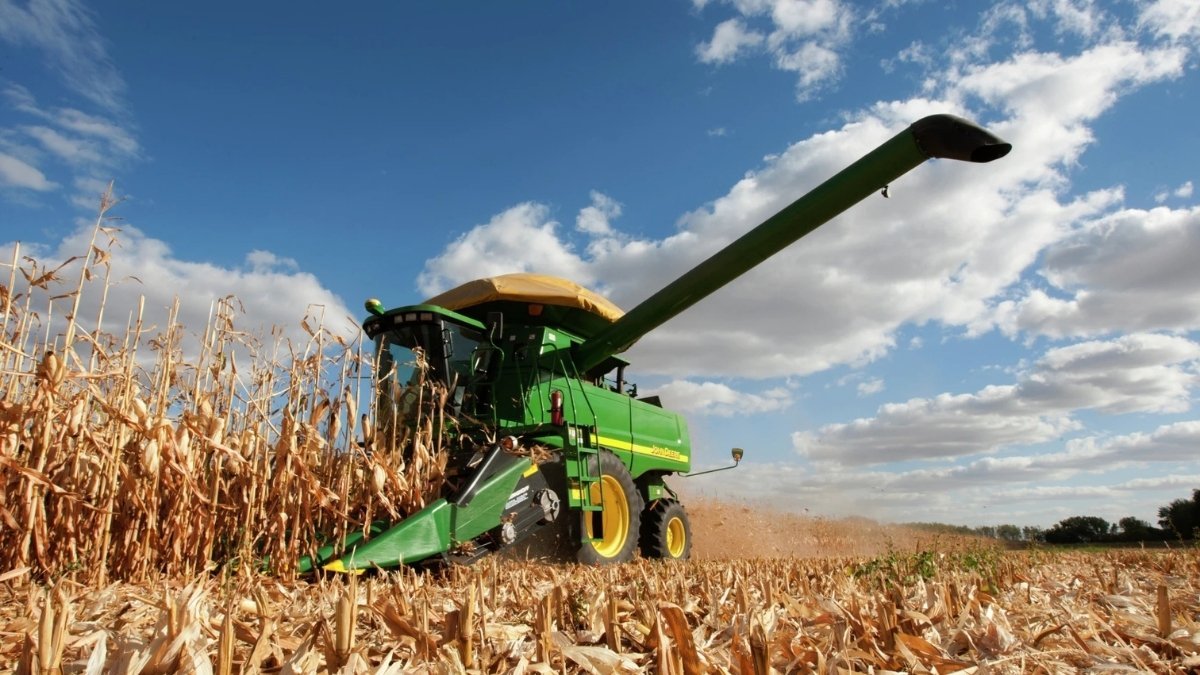The United States is preparing for its largest corn harvest ever, but farmers are not celebrating. USDA projections from the Department of Agriculture show corn production could reach 16.7 billion bushels in 2025. That would mark a 13 percent jump from last year and set a new all-time high above the 2023 peak of 15.3 billion bushels.
More corn usually sounds like good news, but not this time. Prices are already sitting near five-year lows and could fall even further as supplies pile up. For many farmers, that means the math does not work.
“We are probably looking at, if we sold at current prices, losses between 80 to 100 dollars per acre,” said Stu Swanson, a family farmer and president of the Iowa Corn Growers Association.
The surge in production comes from a mix of factors. Farmers planted more acres of corn this year, and weather conditions were favorable across much of the Corn Belt. Yields are on track to set new records, creating a situation many experts call a double hit.
“It is a double whammy, we planted more and we are getting more than usual,” said Chad Hart, an agricultural economist at Iowa State University.
The demand side of the story is less hopeful. People and industries are using about the same amount of corn as before, with little sign that usage will climb enough to keep up with supply. That imbalance is fueling the price slump.
The National Corn Growers Association has warned that this record harvest could harm farm income. Last week the group asked lawmakers to take action to boost demand, pointing to biofuels and export markets as key areas.
Corn has always been a bet for farmers. It goes into animal feed, ethanol fuel, and exports. Compared to soybeans, corn looked like a safe option in 2025. But with weather boosting yields, the U.S. is left with much more corn than expected.
The question is what happens next. Nearly 40 percent of corn goes into animal feed, about 37 percent into ethanol, and roughly 15 percent is exported. Just 1.5 percent ends up directly in cereals or other food products. That means everyday food demand is not enough to solve the oversupply.
The corn lobby is pushing Congress to approve rules allowing year-round sales of higher ethanol blends. Since ethanol is made from corn starch and blended into fuel, wider access could raise demand. Trade groups are also urging President Donald Trump to push for new international agreements that open doors for U.S. corn abroad. Mexico already imports about 5.5 billion dollars of U.S. corn annually, making it the top buyer.
For consumers, lower corn prices will not bring much change at the grocery store.
“We might see a little bit of relief, but it is going to be muted,” said Joe Janzen, an agricultural economist at the University of Illinois. He noted that other costs in the food chain are rising, and they outweigh savings from cheaper corn.
Take beef as an example. Ground beef prices hit a record 6.25 dollars per pound in July, up more than 13 percent from last year. Corn feed costs dropping should help cattle producers, but other forces, including tight supply and the spread of flesh-eating screwworms in Mexico, are pushing prices higher.
In trade, the story is just as complex. Some foreign buyers are racing to lock in corn shipments before possible tariff hikes. That has helped exports hit a record pace this year. “As far as the number of bushels leaving international markets, we will set a record,” said Hart.
The challenge is keeping that momentum once tariffs are enforced. Exports tend to adjust the fastest when trade barriers rise, and U.S. corn could face tougher competition from other producers.
[inline_related_posts title=”RECOMMENDED” title_align=”left” style=”list” number=”6″ align=”none” ids=”” by=”categories” orderby=”rand” order=”DESC” hide_thumb=”no” thumb_right=”no” views=”no” date=”yes” grid_columns=”2″ post_type=”” tax=””]
Janzen believes trade tensions are a major reason for the price weakness. “We have competition, and that competition is ready to step in and supply corn to places like China, Europe, and other major destinations,” he said.
For farmers, the record harvest is a bittersweet moment. A bumper crop usually means financial strength, but with prices tumbling and trade rules uncertain, the outlook is far less bright.
















Oh wait, I thought farmers were independent and would never ask for government assistance. /s